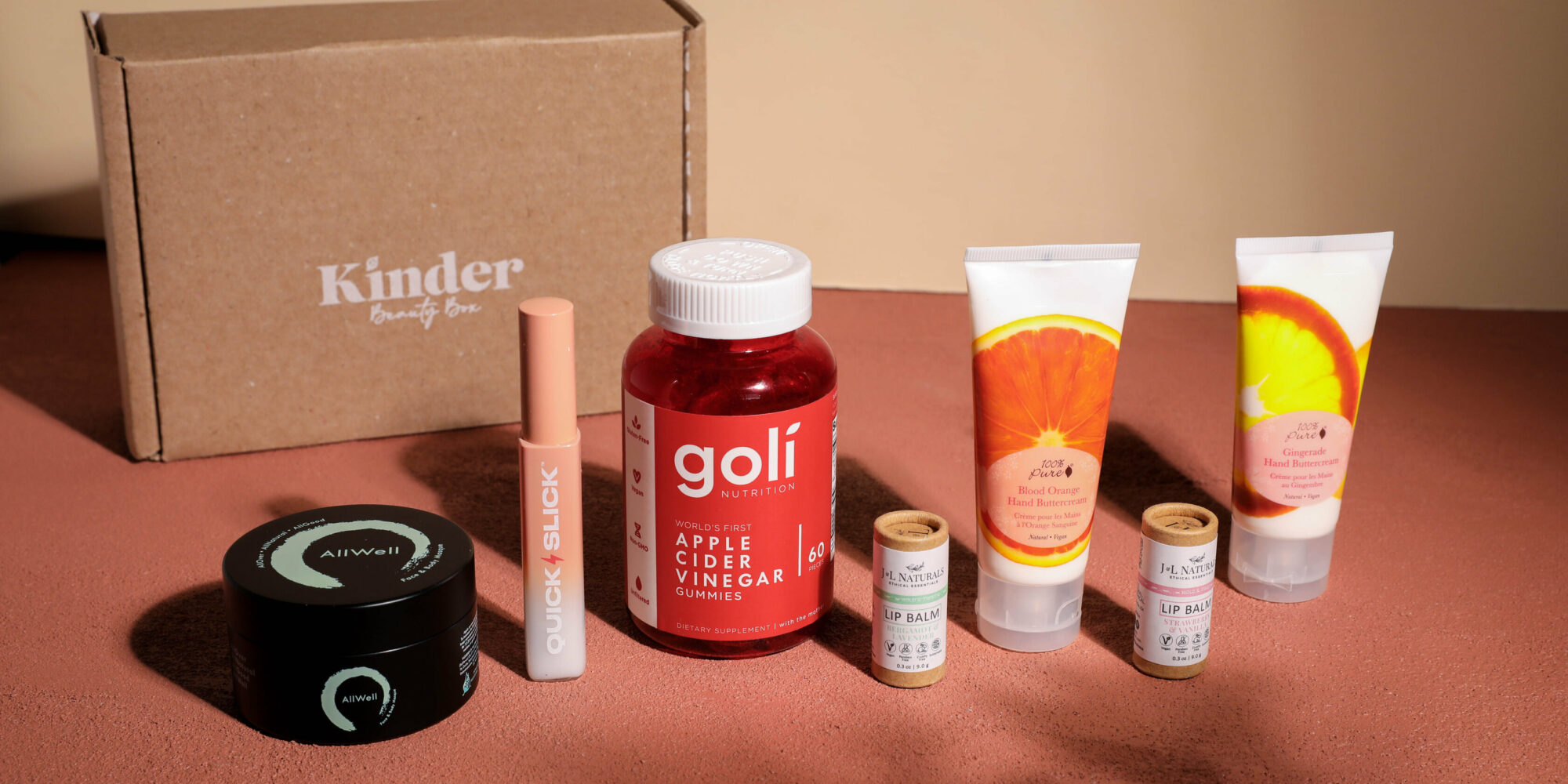
Kinder Beauty Moves To Future-proof Its Business As Subscription Boxes Struggle
Kinder Beauty is diversifying its business. In addition to its signature beauty box that ships to 12,000 monthly subscribers, the clean and cruelty-free-focused company now has an in-house skincare line featuring three vegan facial serums and a quarterly lifestyle box called KND. The expanded offerings come after two years of roughly flat sales.
Launched in 2019, Kinder Beauty notched a triple-digit sales increase in its first year as e-commerce sales surged early in the pandemic, but it was subsequently left in a tight spot as consumers returned to brick-and-mortar stores and the global supply chain broke down. CEO and co-founder Andrew Bernstein says, “For a business that curates products from other people, the supply chain impacted us more than a traditional retailer or one of our beauty brand partners.”
Kinder Beauty isn’t alone in its struggles. Subscription boxes generally are grappling with tough economics and changing consumer sentiment. Alltrue shuttered last year, although it’s since relaunched under new ownership. In 2021, Femtech Health acquired Birchbox, a company once valued at about half a billion dollars, for $45 million. In November, the publication Women’s Wear Daily reported that Femtech was weighing restructuring options, including a Chapter 11 filing. In 2020, FabFitFun laid off 20% of its workforce.
Beauty Independent spoke recently with Bernstein about the challenges facing subscription boxes, how Kinder Beauty is weathering the collapse of Silicon Valley Bank, and why Goop plays into his vision for the future of his business.
How is business at Kinder Beauty, and how has the business shifted since 2020?
It has been an incredibly eventful and turbulent three years. People weren’t leaving the house back in 2020. They were worried about their jobs and finances. While that was an unfortunate place for consumers to be, for a business like ours that offered a little bit of luxury and convenience delivered right to your door with a great value, it was a strong time for us.
We saw 300% growth in 2020 over 2019. Of course, everybody was trying to read the tea leaves then. Is this the new normal? What is consumer behavior going to look like? Is anybody ever going to shop at a mall or at a Sephora store again? The reality is nobody really knew.
We all know what ended up happening. In 2021, people started to get sick of being indoors. They wanted to spend money on experiences, on travel, meals and spending time with friends. So, where the pendulum had swung one way in 2020, it swung back quite aggressively in the other direction in 2021.
Then, as we got into 2022, we started to see a lot of these issues around the supply chain. That started to affect everybody, but I think small businesses got hit particularly hard. Everybody had to absorb all these increased costs, whether it was in raw materials or packaging. The cost of freight went up 2, 3, 4 times in the past two years. As our brand partners absorbed these new costs, they had to raise prices to us. Now people’s COGs have gone up.

We then have to get a more expensive product from the manufacturer at a higher cost, put it in our own packaging and ship it back out to the consumer. So, we’re actually absorbing higher costs along the supply chain at more touchpoints than our beauty brand partners were.
When you put that together with all the economic fears that have been circulating over the last year and a half and venture capital money drying up, it’s created a very, very different environment for small e-commerce businesses. For the subscription business, it’s been pretty rough. We saw a much flatter year in 2021. We still saw growth, but 10% to 15% growth. We saw roughly the same in 2022 over 2021. From a sheer subscription numbers growth perspective, things have been relatively flat for the last two years.
The change in gross margin is very much dictating how we approach the future of the business now. Our gross margin went from north of 40% back in 2020 to just under 25% at the end of this past year. That is not a sustainable margin for any business to rely on unless you’re a mom-and-pop shop with no employees or overhead. That’s really indicative of the struggles we’ve seen in the subscription box market overall. Look at what Alltrue went through and what’s going on with Birchbox now, for example.
Are eroded margins the only factor contributing to subscription box struggles?
What we were always building with Kinder Beauty was a community, and there was a point in time where what we had to offer that community was a beauty box. All of the beauty boxes had thin margins, and they always depended on mass scale to make their numbers work.
If you go back four years, pre-Kinder Beauty, and you look at the early days of Ipsy and BoxyCharm, it didn’t matter if their margins were 26% or 45% to 50% to be honest. They had so much scale. Then, the market changed, not only in terms of margins, but also in terms of consumer sentiment around boxes.
I can’t tell you why it’s changed, but the consumer who wants a subscription box is very particular and very well-educated and knows exactly what the differences are between the boxes. They also know exactly what they want.
Kinder just launched a skincare line. Is that how you plan to grow the business again?
We looked at this community-based business that we’ve built, and we have people who really trust us and adore our brand. It comes down to a couple things. On one hand, there are certain products that we just haven’t been able to put in our boxes before. The COGs are just too high for our business model.
For example, we hear our customers say that they want a high concentration vitamin C, so we’re like, “OK, well, let’s look around the market.” If you look at our budget for five products that go in a box and one of those is from Ole Henriksen or Herbivore, we’re likely going to pay more than half of our budget for one whole box for just one of those products. The numbers don’t make sense for us. Ideally, we want to be this one-stop-shop for customers, but there are certain products we just haven’t been able to provide.
On the other hand, we have to make up for the loss in gross profit somewhere. When you put those two things together, it becomes clear that we’ve built this foundational platform with consumers where we could fill that gap on our own. Obviously, this wasn’t a very new idea. One of the most common questions we heard from investors and customers alike was, “When are you going to develop your own products?” We always said, “When the time is right.”
As we got into early 2022 and I was really studying our P&L, it became clear that, if I didn’t shift the business model or start some sort of pivot, it was going to be like following the lemmings off of a cliff. Launching skincare is one part of that pivot.
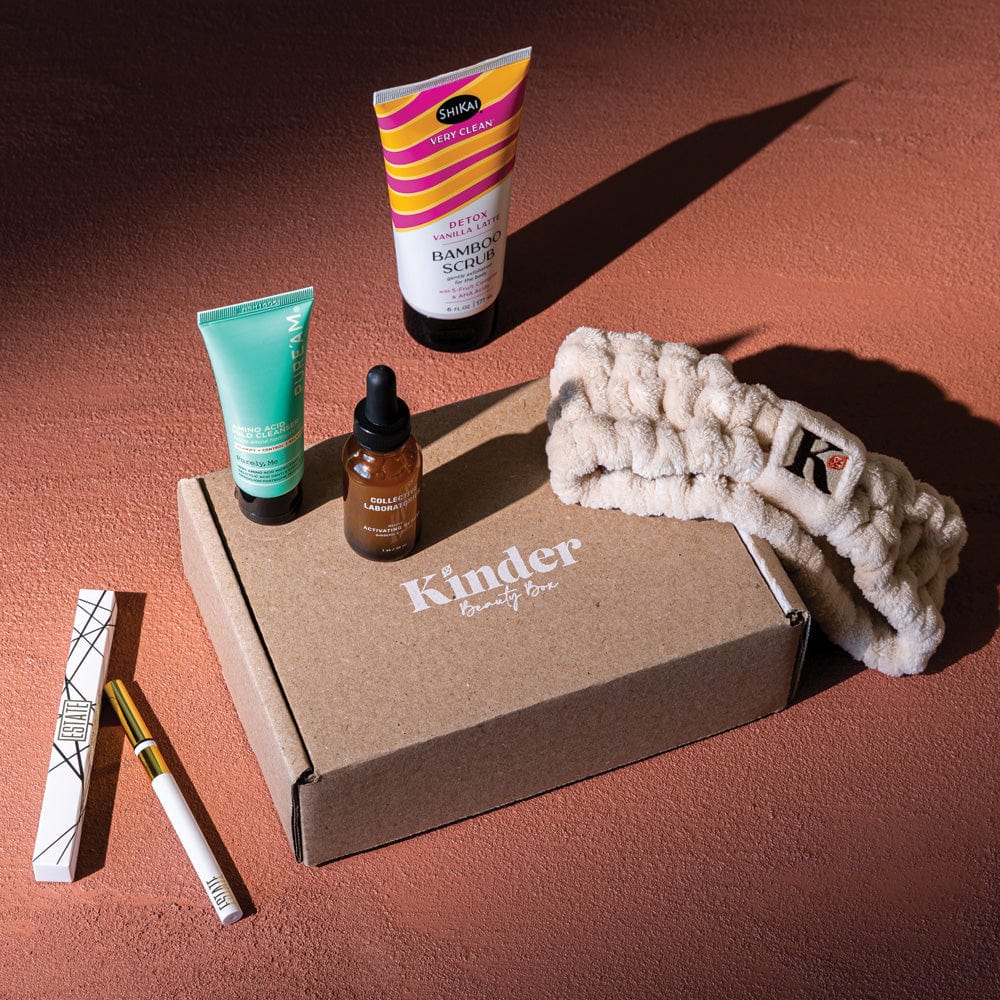
What was the other part of that pivot?
I always wanted to do a quarterly lifestyle box. So, we started putting into development what became our KND Box. It’s our ethical cause-driven answer to something like a FabFitFun or an Alltrue.
The way we approach the curation and the theme around that box is different than what anybody else on the market is doing. We launched KND in November and the first box was called the Cozy Edition. It completely sold out as of a few weeks ago. We’ll launch our second box on April 1st.
We really wanted to approach the curation of these lifestyle boxes around a narrative. The narrative for Cozy was built around my wife who’s a mom to a wild toddler and needs all of the self-care moments she can possibly find. I started to think, “How would I curate the perfect self-care night in for my wife?”
We really broke it out. I pictured her bundled up on the couch by the fire, and it was this whole pampering experience. The box had an adaptogen wellness tea from Clevr Blends called Sleeptime SuperLatte that’s packed with all these relaxing herbs and supplements. We packaged it with an electronic frother and a custom mug that reads “Be Kinder” to go along with that. We wanted to create this moment.
Is Kinder Beauty’s subscription service still adding value to the business or do you plan to drop it from the model?
I want to have my cake and eat it too. I don’t see the subscription box going away. I see what it is to our revenue streams and what it is to our overall brand-building strategy as simply changing.
I look at a company like Goop. By appearances, they seem to be doing some really interesting things. What’s so special about them is that they are as equally respected as a curator of other amazing products as they are for creating their own products across multiple categories. I look to Goop as inspiration of what Kinder can become.
That’s not something anybody in the beauty box space would’ve either envisioned or worked towards several years ago because there was no need for it. Now what I’m trying to figure out is, “How we be profitable, which we’ve never been, if we only had a thousand customers?” Forget growth for a bit. If you could figure that out, then you’re exponentially more profitable at 20,000 customers, at 100,000 customers, at a million.
Between the beauty box, the lifestyle box and the skincare line, we’re trying to make ourselves a multi-pillar business. The idea is to be able to cross-sell and bring customers through from one pillar to the next seamlessly. We’re already seeing that happen. I stopped paid ads for the beauty box two months ago, and we’ve lost 50 subscribers. That’s amazing.
That means what we’re doing is we’re bringing people in for our skincare line. We’re bringing people in for our curated products in our beauty marketplace. We’re bringing people in for the quarterly box, and they are choosing to add things to their cart so to speak. None of it cannibalizes anything else. We’re offering more things to the same consumer. The future of our business model is to be that one-stop shop for all of their self-care, skincare, beauty and wellness needs.
Did you shut off paid marketing entirely? Which pillar of the business is bringing in new customers now?
We’ve significantly pulled back in all outward marketing, but haven’t completely shut anything off. Our paid advertising budget was down 60% to 70% throughout January, February and March compared to October through December. It’s about a change of focus.
The strategy has been around asking ourselves, “What is the product offering that has the biggest chance of bringing in a kind of consumer that would be interested in everything?” The answer to that is the quarterly box because it has skincare, beauty and wellness together, and it’s also priced higher than our beauty box, which suggests a shopper with a little bit more disposable income.
We love value shoppers, too, and they love Kinder because they can get our monthly beauty box with five products that have a value of $165 for just $26, but it is a different consumer.
Each lifestyle box is priced at $64.95 for more than $200 worth of products that are really going to up your self-care game. When we bring that customer into our orbit, we find that they are more likely to also be interested in the beauty box or the serums or future products we’re planning to launch. So, we’re looking to acquire a different kind of customer now to support the new model.
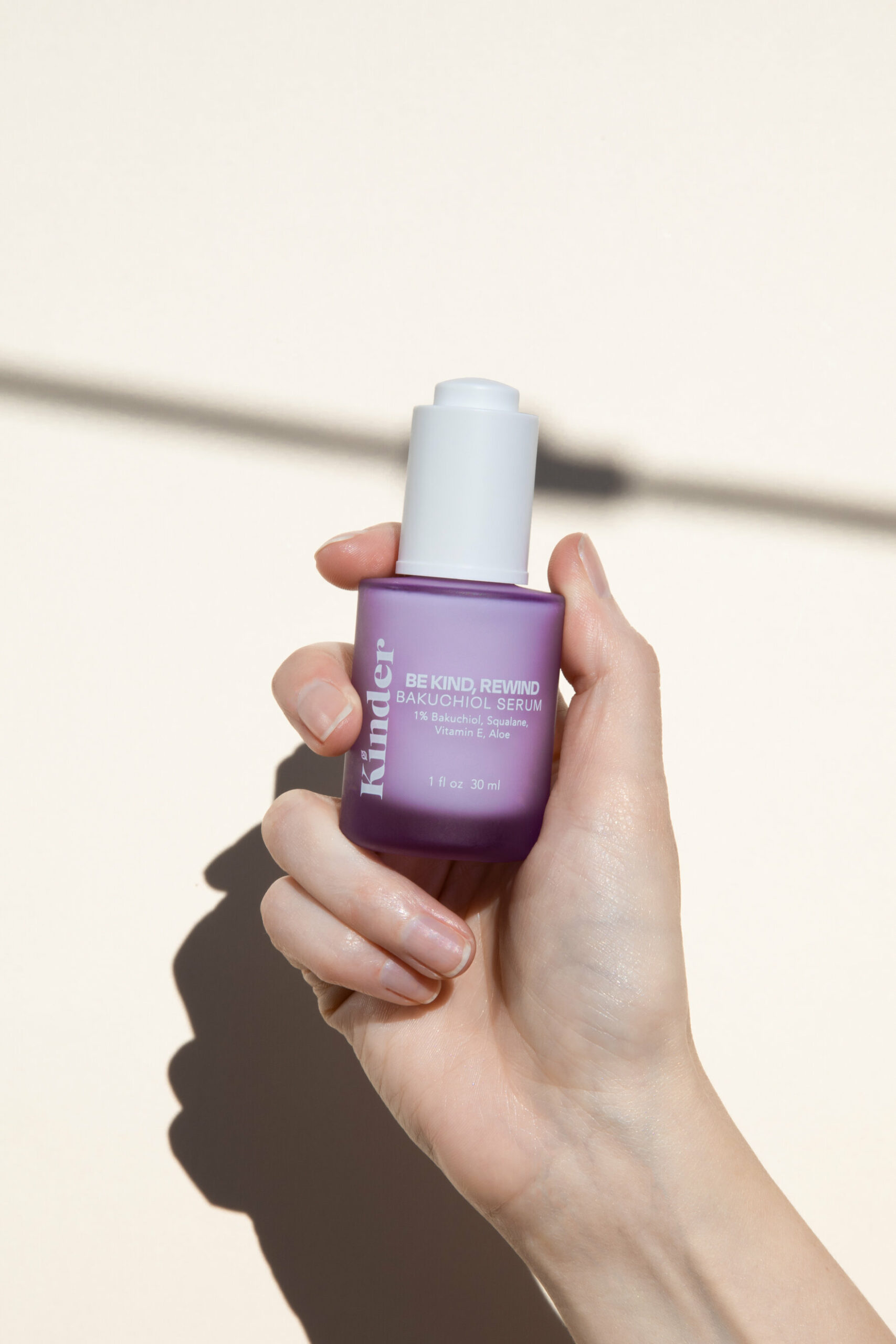
Subscription boxes have been criticized by vendors for late payments. How would you respond to that?
As a non-venture backed, privately funded company, Kinder doesn’t carry tens of millions of dollars in the bank at any given time. Our payment terms have changed drastically in the last year. The truth is we want product in our warehouse two months early because we’ve been burned before. Everyone’s been burned by product not showing up on time or it shows up damaged and it’s too late to do anything. Then, you have a really bad consumer-facing problem.
Vendors want to be paid as soon as the product is received by us, but we don’t realize a dime of revenue on that product until 30 days after we’ve shipped it. So, if product arrives 60 days early, for example, we’re not going to see a dollar of revenue on that product for 90 days. That creates a really bad situation in a time when venture capital has dried up. Plus, if these vendors are doing less revenue than they used to, now you have compounded problems.
It’s an ongoing issue specific to the subscription industry, particularly as curators of other people’s products that have a built-in delay between when product is received and when we realize revenue. It’s tricky, and I’m working with my team right now on how to tackle these exact issues. How can we adjust our payment terms and our inventory? How can we set vendor expectations? Can product arrive 30 days in advance or is that going to create problems?
Now, without doubt, sometimes where there’s smoke there’s fire when it comes to late payments. But, overall, I think brands need to understand how it works from our end if they’re going to use a subscription box as a marketing platform.
I still think subscription boxes are as strong of a marketing platform as they’ve ever been. We know that because brands come back and work with us again and again. Almost never does a brand work with us and not express unsolicited that they want to come back and do another box. The value is still there, but the business model must make sense for both sides.
Kinder has been affected by the recent failure of Silicon Valley Bank. What’s the experience been like, and do you think the collapse will have further impacts on beauty or retail?
What I saw with the SVB debacle was an unprecedented “too big to fail” type of situation. Of all the stresses I face every day as the CEO of a small business, I didn’t have my bank collapsing on my startup bingo card. I just didn’t think such a thing was a possibility, but it happened, and I think both big businesses like Roku and Shopify and small businesses like Kinder Beauty felt the pain, fear and uncertainty that came with the news that our bank had defaulted.
In our case, the timing as it relates to our payroll schedule was especially unfortunate and made it so that we came very close to not being able to pay our small team. For us, this remains an ongoing issue. As of March 21, we still haven’t managed to get all of our funds out of SVB and wires sent to vendors from that account, which still shows a five-figure balance, continue to fail without explanation.
We’ve reached out to SVB support, but have not heard back or received assistance. I do believe that our situation may be a bit of an outlier, though I know for a fact we’re not the only small business still facing issues with SVB.
As far as long-term impacts on the beauty and retail business, I would imagine that venture-backed or hyper-profitable businesses that previously kept large sums of cash in the bank will likely never manage capital in quite the same way again. Many banks have already increased their standard FDIC insurance coverage from $250,000 to upwards of $2 million.
But if you’re a business that does $40 million in revenue per quarter, what do you do with all of that cash now that you’ve had a glimpse of what a banking collapse could look like? Do you buy short-term treasury bonds? CDs? Set up multiple checking accounts at multiple banks? I don’t know the answer to these questions, but I think they highlight what lasting changes may occur once the dust has settled from the SVB collapse.
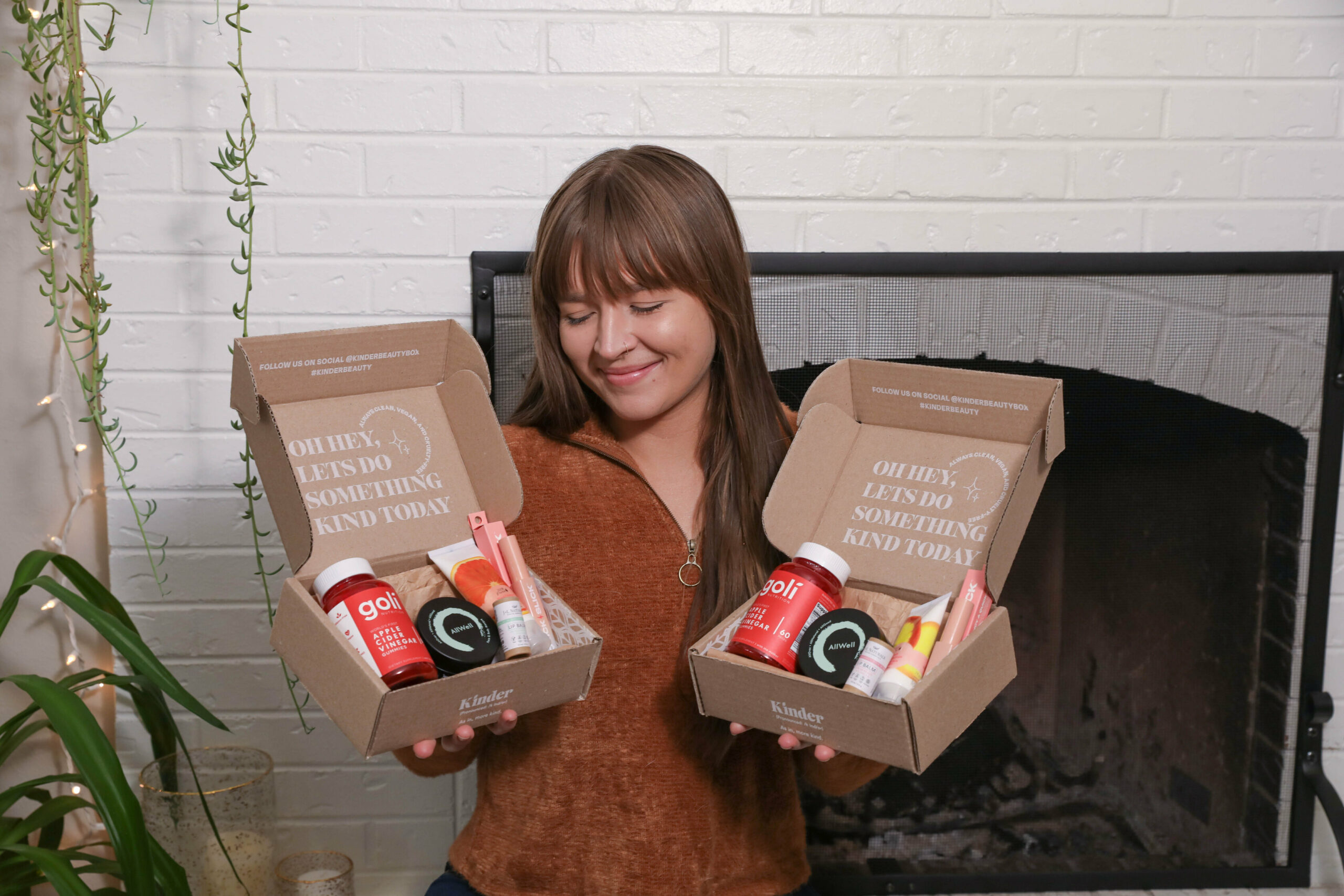
What do you think will happen in the subscription box market?
I think there is going to be more and more consolidation as well as more closures and deep pivots. There’s going to be more differentiation than there is right now between the players that remain, too.
I would say Kinder is very different than a BoxyCharm or Ipsy. I mean none of them are clean, cruelty-free or vegan. We’re giving $50,000 to the ASPCA this year, and none of the other boxes I just mentioned can tout any of those things. So, we are very different.
From the consumer’s perspective, they’re looking around and are like, “OK, this box does good in the world and has cleaner products. This one has more Sephora-type brand names. This one costs $27.99. This one costs $26. They all kind of do full-size products. What’s really the difference here?”
Right now, they’re all kind of bleeding into each other a bit. What we’ll start to see is a separation into corners. The value boxes will remain, which I would say is the BoxyCharms and Ipsys. They do a really good job at providing customers with value. I’d say FabFitFun does the same thing on the lifestyle side.
On the other side of the spectrum, there will be a pillar for something different. What if you could combine what Goop is today with what Honest Company was a couple years ago in a subscription box? When I think about the future of Kinder Beauty, that’s the weird Frankenstein thing that I see.
If you can combine those things, I think you end up with something special for a different kind of consumer, a consumer who wants to get all of their products in one place across the beauty and wellness landscape.
Do you feel positive about Kinder Beauty’s future?
We feel like we are really hitting a stride right now after 18 months of having lots of questions and no real answers. We’re starting to see evidence in our core business fundamentals that validates that we’re on the right path.
In the last three months, we’ve seen an up to 30% reduction in monthly net operating losses, and we’re barely getting started. I’m feeling very optimistic, but that doesn’t mean things are going to come easy.
There’s a bit of education that’s now required from us now. Customers know us as a brand that’s been curating cool beauty products for the last four years, but now we’re curating wellness products and producing beauty products. There’s always going to be early adopters, and we’ve seen them in mass, which is exciting. Like I said, we sold out our KND box and the launch of our serums has been ahead of expectations.
Now, behind those early adopters, you have to convert that next larger group of people who are waiting and need to be educated further. We have our work cut out for us but, overall, everything we’ve done over the last six to twelve months and all the decisions that we’ve made are being validated in hard data. That’s everything you can ask for as a business owner.
We’re very excited to see what the business looks like in three years both from a profitability perspective as well as a multi-pillared business perspective.
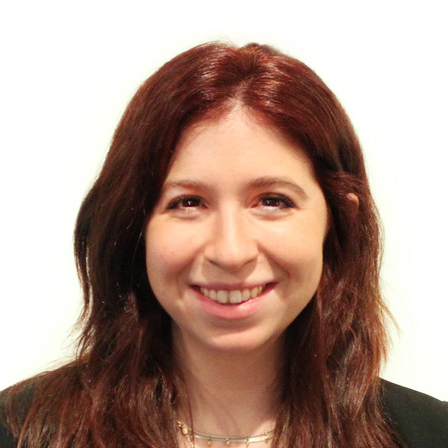
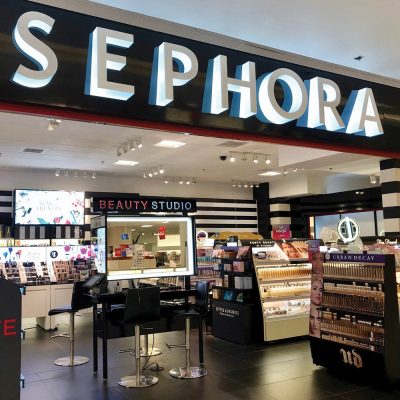
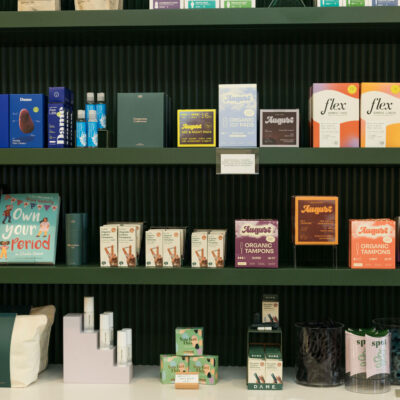
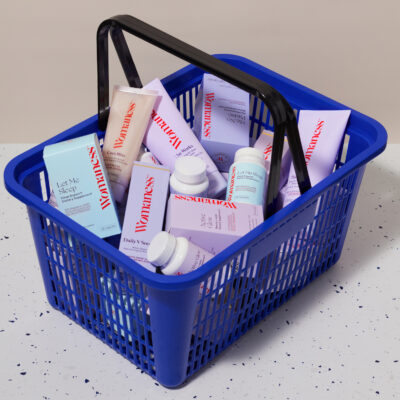

Leave a Reply
You must be logged in to post a comment.